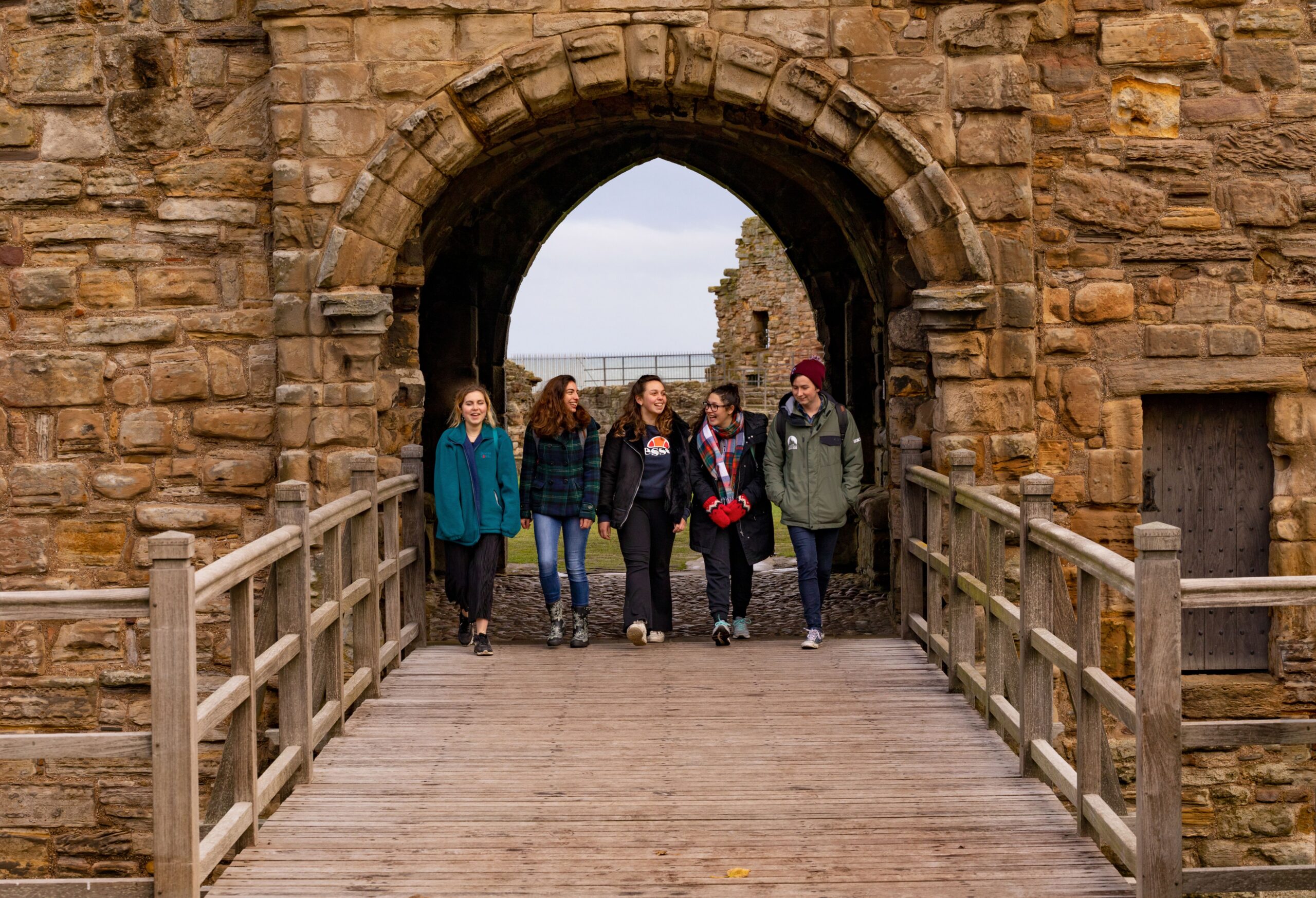
Summer Study
For a small country Scotland has a large historical footprint. From the making of the kingdom and the development of its identity as one of the nations of Europe, Scotland has retained a strong and changing sense of its past both as an independent state and as part of the United Kingdom.

Scotland’s History:
Kingdom, Nation, People
This course examines Scotland’s rich history via the close study of some of the key aspects of the country’s past. It draws on the physical environment, material objects and written texts to provide a sense of the events and themes which have formed Scotland’s history.
The course will be split into 4 main sections.
- Scotland’s emerging national identity
This section will be devoted to exploring key elements of an emerging sense of national identity in Scotland, initially through tensions in the structural organisation of the church within the British Isles in the 11th and 12th centuries. This will focus especially on the role of St Andrews and the relationship with a succession of kings of Scots. The topic will finish with an examination of the circumstances leading to the foundation of Scotland’s first university in 1413.
- Scotland and Her neighbours in the Middle Ages
Medieval Scots were deeply conscious of their place amongst the nations of Europe. Though their land lay at ‘the ends of the Earth’, they were keen to play an active role in European politics and to find fortune beyond the kingdom. Of course, the key relationship was that with the English kingdom and people and this week will examine the changing attitudes towards England during the period 1200-1500. This will involve looking at the wars in which William Wallace and Robert Bruce defended Scotland’s status as an independent realm.
- Renaissance Scotland: power, propaganda and print
In this section you will explore how Scotland’s royal house asserted its position not only alongside its neighbours but over its subjects in the century before the Union of the Crowns with England in 1603. Every monarch in the century before this had to negotiate this proximity to the English crown, along with the pressure to participate in an ever more extravagant European inspired court culture, and the need to negotiate for the first-time religious divisions between Catholics and Protestants. You will see how these pressures created a culture of political spin, propaganda and performance which could be used either to serve a monarch or, in the dramatic case of Mary, Queen of Scots, to cast them down.
- The Scottish soldier: image and identity
The kilted Scottish soldier is an instantly recognisable figure synonymous with Empire and Britain’s military achievements. This week we will explore the origins of Scotland’s martial tradition and Scottish soldiers’ role in Britain’s imperial project, focusing on their contribution to the various colonial campaigns of the later nineteenth and early twentieth centuries, and the First World War. Using a range of contemporary reports published in books, magazines and period newspapers, and considering the many visual representations of the Scottish soldier (portraits, advertising, statues, war memorials etc.), you will consider how the Scottish soldier has been represented in popular culture and whether this iconic figure was more image than reality.
Monastic Scotland:
History and Archaeology
This unique four-week Summer Study course offers students the opportunity to explore the history of medieval Scotland first-hand. In addition to classroom-based study of the history of medieval monasticism in Scotland, students will gain extensive hands-on training and experience in field excavation, lab-based bioarcheology, archival work, and cultural heritage management.
Thanks to an exciting new partnership between the University of St Andrews and Lindores Abbey Distillery, students will have the opportunity to participate in excavations at Lindores Abbey, a twelfth-century monastery with a tradition of distilling on the site dating back to the fifteenth century.
Our excavations are designed to examine the relationship between the abbey and its landscape, and particularly its relationship with and use of water. Investigations will include both the wider landscape of the abbey and the development of waterways, including the nearby River Tay and Loch of Lindores, and the use of water within the monastic precinct itself.
No prior excavation experience is necessary, and students will earn transferable St Andrews credit while studying with expert archaeologists and historians.
Course content
In Week 1, students will be introduced to the origins of Christian monasticism and the medieval religious history of Scotland, St Andrews, and Lindores Abbey. Field trips will offer opportunities to explore the history of monasticism along the River Tay.
Morning lectures in Week 2 will delve into a range of specific topics in the study of medieval Scotland, including economic change and water use, along with field-based archaeological skills. Afternoons will be spent on library research, optional workshops, and excavation work at Lindores Abbey.
Week 3 will focus primarily on excavation work, with two morning lectures on the history of religious orders in Scotland.
In Week 4, students will continue excavation work, culminating in an open day and site tours at the Lindores Abbey site. Students may also choose to devote one or two days to library research or heritage work in St Andrews.
